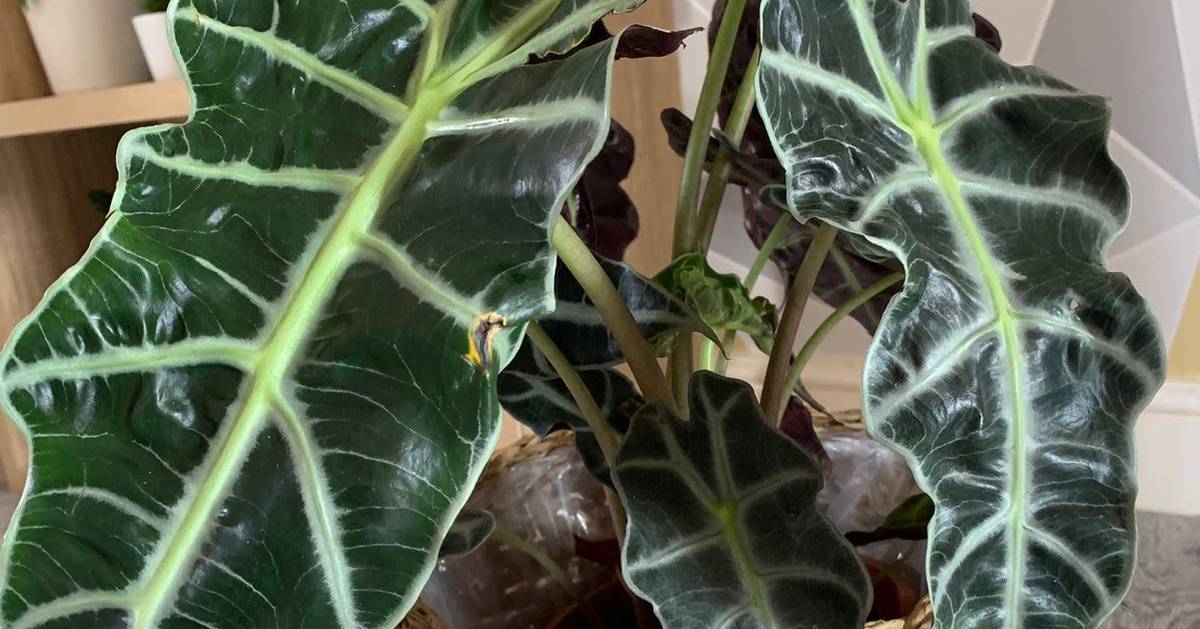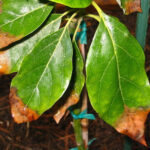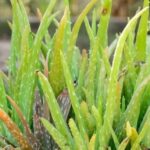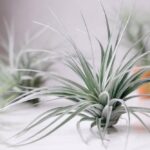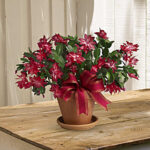Why are the leaves on my alocasias going brown? Sunburn, overfertilization, overwatering, low humidity, rust spots, infections, and other factors are all prevalent causes.
It will be easier to remedy alocasia brown spots on leaves if you can figure out what’s causing them. Before correcting a problem with your plant, it’s a good idea to study it and figure out what’s causing it.
The purpose of this essay is to investigate these difficulties in order to determine the specific cause of alocasia leaves turning yellow and brown.
Here are some causes and tips for your reference.
Underwatering Stress
The natural habitat of alocasia is rich in moisture. The high moisture content in the soil makes the plant develop stunning foliage that maintains its colors for a long.
But underwatered alocasia tends to wither, drooping leaves, and die. If you notice your alocasia leaves turning brown, it could be due to under-watering.
Investigate the potting mix by inserting your index finger. If the topsoil is dry, consider watering your plant to revive the beautiful foliages.
Water the houseplant once in the morning to foster hydration. Hydrated alocasia will not experience any leaf problems.
Stick to a healthy watering routine to avoid overwatering. A damp environment makes alocasia plants develop root rot that might cause other leaf issues.
Treatment:
· The best treatment is to provide your alocasia with enough water.
· Watering once early in the morning is advisable.
· Don’t overwater your plant; this will do more harm than good.
· Make sure the 2 inches of topsoil has dried a bit before the next irrigation.
Cold Drafts
Cold drafts happen to be the leading cause of alocasia leaves turning brown. These tropical plants thrive in warmer conditions.
Cold drafts result in frostbite, and this condition ends up damaging the alocasia foliages. The leaf cells usually hibernate and get denatured if the condition persists for an extended period.
Frostbites result in bumpy brown spots on the leaves. The condition usually shocks the plant and causes vital tissue damage in the leaves.
Treatment
· Keep your alocasia away from cold drafts, such as unsealed windows.
· Make sure they’re in a temperature-controlled room. You may want to skip conservatories and patios during winter unless they’re heated.
· Ensure temperatures stay on the warmer side – i.e. between 60ºF (15ºC) and 82ºF (28ºC).
Low Humidity
Alocasia plants prefer warm and humid conditions. These tropical plants display their stress on the foliage in case of humidity changes.
Alocasia leaves drooping and turning brown are initial signs of low humidity. Dry air usually discolors the leaves in the long run.
Low humidity is common in winter, and it causes little moisture in the air. Alocasia crispy leaves are other signs of low humidity.
Treatment
· If your living space is dry, give your alocasia daily misting.
· You can spray your plant gently every month or so during summer with the garden hose.
· During winter, set your alocasia in a humid room, like the bathroom.
· Water well, ensure good air circulation, and group non-diseased plants together to boost humidity levels.
· Use a water tray with pebbles to create a humid microclimate around your alocasia.
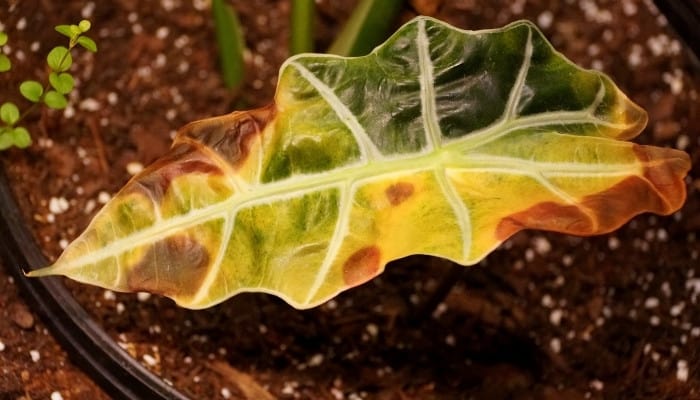
Temperature Stress
Alocasia plants thrive in a temperature range of 64-85oF. The condition allows the plant to develop stunning leaves that make a bold statement in any room.
But maintaining the temperature at home can be a daunting experience. The indoor temperature is dynamic, and this can pose a health threat to your plant.
Both hot and cold drafts can shock your houseplant. These extreme temperatures cause vital tissue damage in the plant and facilitate the browning of leaves.
Many gardeners freak out when they notice elephant ear leaves turning yellow and brown. But there is no need to worry since the issue can be fixed by adjusting the indoor temperature.
Treatment
· Presence of pale, tan, or yellow leaves.
· Browning of leaf tips.
· Sulky leaves that may wilt and fall over.
· Extra dry soil mix.
Low Lighting Condition
Alocasia plants love bright indirect sunlight. The exposure allows the houseplant to undertake photosynthesis and other vital physiological processes.
Low lighting condition is an indirect cause of brown leaves. The condition causes stunted growth and increases the risk of root rot and nutrient deficiencies.
Alocasia leaves turning brown is a sign of displeasure. The best option is to install strong artificial lights or place the plant in a location that receives plenty of indirect light.
Treatment
· Find a well-lit spot that receives indirect sunlight for your alocasia.
· You can use a top-notch light meter app. They’re dime a dozen on App Store and Google Play.
· If nutrition deficiency has set in, fertilize your plant accordingly. The same is true for overwatering, root rot, and edema.
Insect Infestation
Insect infestation is another common cause of alocasia leaves turning brown. Mealybugs are the main culprits responsible for damaging the alocasia foliage.
These insects attack the stems and leaves. They suck cell sap by piercing the foliage and end up damaging the tissues. Insect infestation results in alocasia brown spots on leaves.
Other pests that attack alocasia are spider mites, aphids, and scales. Always inspect your houseplant more often to prevent excessive pest infestation.
Treatment
· Take your plant to the bath or shower.
· Blast it with water to get rid of bugs.
· Spray with insecticidal soap, horticultural oils, or other insecticides like neem oil. Repeat weekly until you eliminate the bugs.
Plant Diseases
Alocasia plants are less susceptible to diseases. But this does not imply that the houseplant is immune to common diseases.
Alocasia leaves turning brown could be due to fungal diseases. The conditions usually result in alocasia brown spots on leaves.
The bacteria leaf spot occurs due to a wet environment. Always avoid watering your plant from the top to prevent the occurrence of fungal diseases.
Treatment
· Separate and quarantine diseased plants.
· Trim off diseased roots, leaves, and other parts.
· Avoid overhead watering. Water your alocasia at the base early in the morning. Ensure ample air circulation.
· Apply Bordeaux mixture, anti-fungal, anti-bacterial, or other antimicrobials as needed.
· Instead, you can spray your plant using neem oil, tea tree oil, or baking soda.
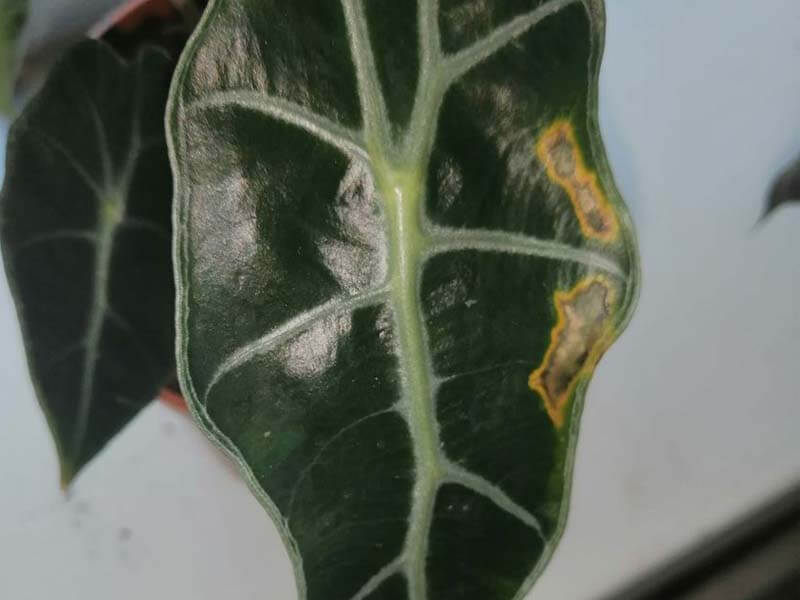
Overwatering Issue
Overwatering is the leading cause of yellow and brown alocasia leaves. The issue occurs due to improper soil drainage.
Soggy soil creates a conducive environment for the development of root rot. It hinders root aeration and absorption of vital nutrients and water.
Alocasia leaves turning yellow and brown are the indicators of overwatering. The best option is to treat the fungal infection to prevent the spread and combat the browning of leaves.
Treatment
· Pop out your alocasia from the container and check it for signs of root rot.
· Diseased roots are usually mushy, fragile, and brown or black. They may give off an offensive smell. Get rid of rotten roots using a sterile pair of scissors/pruners.
· Remove soil around the healthy roots. Wash off the rest with water.
· Dip the healthy root system in an anti-fungal solution. If you prefer organic methods, sprinkle them with ground cinnamon. Or dip roots in hydrogen peroxide solution.
· Repot your alocasia using a fresh, well-drained potting mix. Ensure the container is large enough.
· Park your alocasia in a well-lit indirect light.
Direct Sunlight Exposure
Alocasias are native to the tropical rainforest in Southeast Asia. The canopy provides a shade to the plants to prevent direct sunlight exposure.
If you notice your indoor alocasia leaves turning brown, it could be due to sunburn. Direct sunlight exposure usually burns the alocasia leaves.
Alocasia leaves drooping, and curling is other possible sign of sunburn. The condition can also cause alocasia silver dragon brown tips.
Treatment
· Remove your alocasia from direct sunlight promptly. In most cases, this means relocating your plant from a west-facing window to an east-facing one.
· Steer clear of heat drafts. Take your plant away from the heating unit, and HVAC vents, or it might be exposed to too much heat.
· Sunburn damage is typically irreversible. Remove heavily damaged plant materials to prevent rotting and infections.
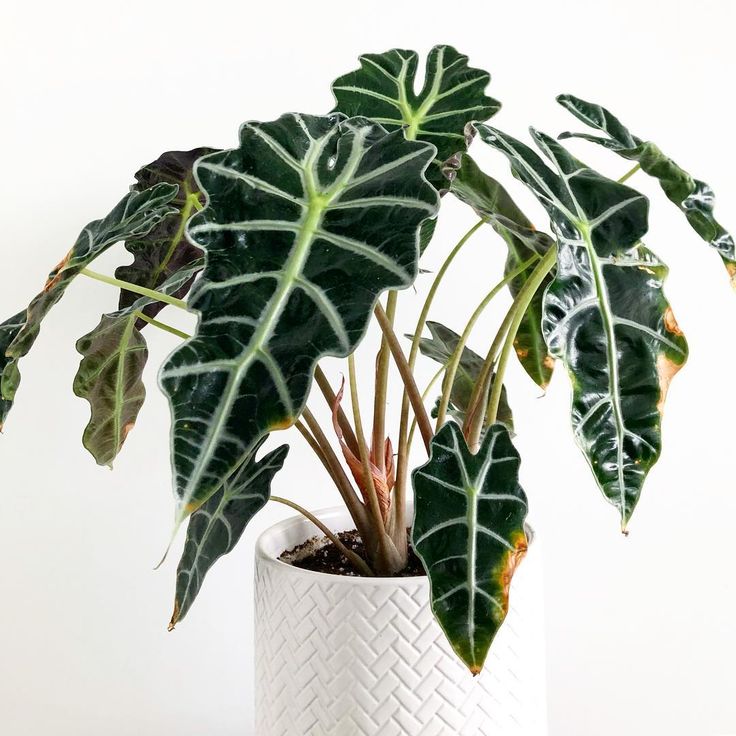
Conclusion:
Bacterial leaf blight, direct sunlight exposure, low humidity, under-watering, and pest infestations are all causes of browning alocasia leaves.
These conditions can be treated to help your houseplant recover. There is no need to panic because the problems can be avoided and treated.
I recommend following a healthy watering routine, applying proper fertilizer, and maintaining an ideal humidity level. These precautions will aid in the prevention of browning alocasia leaves.

